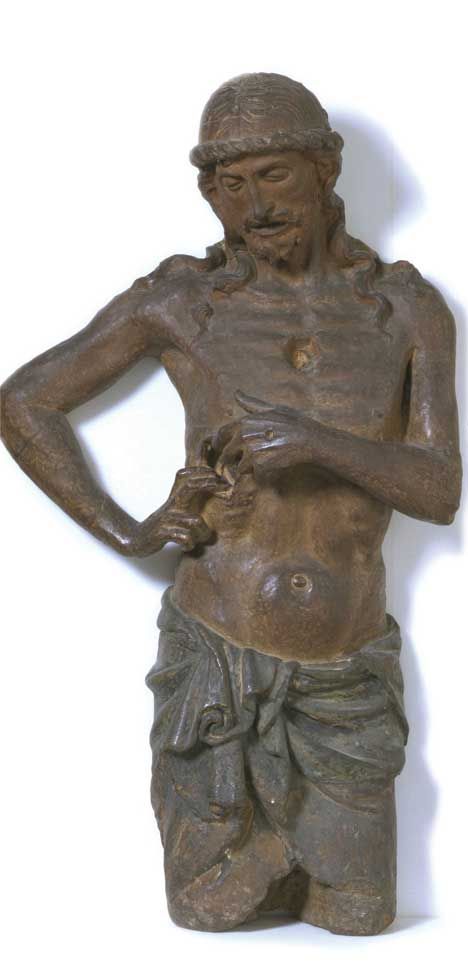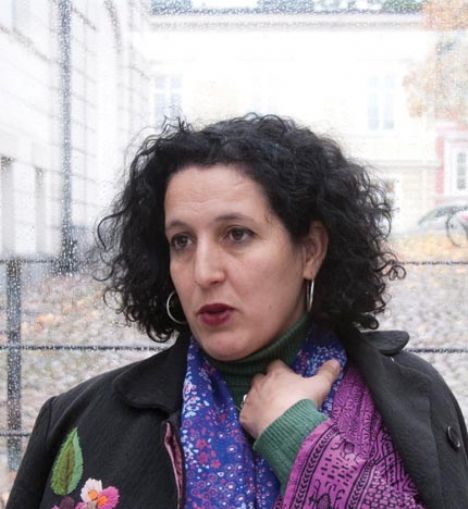On 8 Jun, 2010 With
The temple of Luxor is about one and a fourth mile above that of Carnac, and though it is of smaller dimensions it is in a superior style of architecture, and in more complete preservation. The entrance is thought to surpass everything else that Egypt presents. In front are the two finest obelisks in the world, formed of rose-colored granite, and rising, as Denon supposes, after allowing for the portion buried in the ground, to the height of one hundred feet. But the objects which most attract attention, are the sculptures which cover the east wing of the northern front. They represent on a grand scale, a victory gained by one of the ancient kings of Egypt over their Asiatic…
Read More
On 8 Jun, 2010 With
The redisplay of the museum’s Medieval and Renaissance Galleries By Anna Somers Cocks In the Middle Ages it rained a lot, the beastly barons kept throwing the peasants into dungeons and there was very little for the poor to eat except potatoes. This gallimaufry of Robin Hood meets Blackadder meets Marx on feudalism came from art college students in a survey conducted by the Victoria & Albert Museum in preparation to redisplaying its 3,250 square metres of Medieval and Renaissance Galleries. The galleries opened on 2 December. The survey also showed that most people did not think much of medieval art: flat, ugly and “my children can draw better than this” was the most common reaction. The Renaissance elicited a…
Read More
On 7 Jun, 2010 With
Egyptians cancel Algerian pavilion at Alexandria Biennale following violent protests By Claudia Barbieri The letter mailed to Zineb Sedira at her London home on 22 November was short and to the point. Mohsen Shaalan, head of the fine arts sector of the Egyptian culture ministry and president of the 25th Alexandria Biennale (17 December-31 January), informed the video artist that in response to “the request of the Egyptian population and notably the nation’s intellectuals”, her invitation to take part in the biennale, starting three weeks later, had been cancelled. The reason, it said, was “recent incidents committed by the Algerian public”, a reference, seemingly, to the mob violence by both Egyptian and Algerian football fans that swept several countries before…
Read More
On 7 Jun, 2010 With
No doubt about it, Picasso was brilliant: artistically, he was years ahead of his classmates who were all five to six years older than him. But Picasso chafed at being told what to do and he was often thrown into “detention”: “For being a bad student I was banished to the ‘calaboose’ – a bare cell with whitewashed walls and a bench to sit on. I liked it there, because I took along a sketch pad and drew incessantly … I could have stayed there forever drawing without stopping”
Read More
On 7 Jun, 2010 With
Most writers observe that Titian had four different manners, at as many different periods of his life: first that of Bellini, somewhat stiff and hard, in which he imitated nature, according to Lanzi, with a greater precision than even Albert Durer, so that “the hairs might be numbered, the skin of the hands, the very pores of the flesh, and the reflection of objects in the pupils seen:” second, an imitation of Giorgione, more bold and full of force; Lanzi says that some of his portraits executed at this time, cannot be distinguished from those of Giorgione: third, his own inimitable style, which he practiced from about his thirtieth year, and which was the result of experience, knowledge, and judgment,…
Read More
On 6 Jun, 2010 With
It’s like Picasso was born an artist: his first word was “piz,” short of lápiz the Spanish word for ‘pencil.’ His father Ruiz, an artist and art professor, gave him a formal education in art starting from the age of 7. By 13, Ruiz vowed to give up painting as he felt that Pablo had surpassed him.
Read More
On 6 Jun, 2010 With
The largest of the temples of Thebes, and of any in Egypt, is that of Carnac, on the site of the ancient Diospolis. Diodorus describes it as thirteen stadia, or about a mile and a half in circumference, which nearly agrees with the admeasurements of Denon. It has twelve principal entrances; and the body of the temple, which is preceded by a large court, consists of a prodigious hall or portico, the roof of which is supported by one hundred and thirty-four columns, some twenty-six, and others thirty feet in circumference; four beautiful obelisks then mark the entrance to the shrine, which consists of three apartments, built entirely of granite.
Read More
On 5 Jun, 2010 With
Thebes, an ancient city and capital of Egypt, and the oldest city in the world, was situated in Upper Egypt, on both sides of the Nile, about two hundred and sixty miles south of Cairo. Thebes is “the city of a hundred gates,” the theme and admiration of ancient poets and historians, and the wonder of travelers—”that venerable city,” in the language of Dr. Pocoke, “the date of whose destruction is older than the foundation of other cities, and the extent of whose ruins, and the immensity of whose colossal fragments still offer so many astonishing objects, that one is riveted to the spot, unable to decide whither to direct the step, or fix the attention.” These ruins extend about…
Read More
On 5 Jun, 2010 With
You travel far to sketch a place of scenic beauty. By M.Boddy-Evans
Read More
On 5 Jun, 2010 With
Picasso had such a difficult birth and was such a weak baby that when he was born, the midwife thought that he was stillborn so she left him on a table to attend his mother. It was his uncle, a doctor named Don Salvador, that saved him: ‘Doctors at that time,’ he told Antonina Vallentin, ‘used to smoke big cigars, and my uncle was no exception. When he saw me lying there he blew smoke into my face. To this I immediately reacted with a grimace and a bellow of fury’”
Read More



